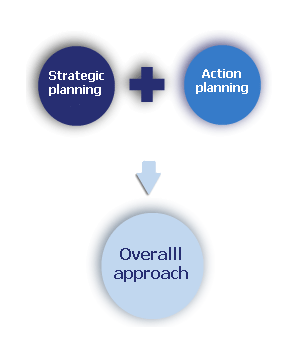| Show/Hide Hidden Text |
An organisation’s overall approach to injury management is determined by both the strategy decided on, and the actions taken to implement this strategy. Two kinds of planning are relevant:

1. Strategic and business plans –
Strategic plans are about the ‘big picture’ and outline overall goals. Injury management is more likely to have good outcomes when it is ‘on the radar’ of an organisation. Including targets for reducing work disability and injury in an organisation’s business plan increases visibility and drives home the business case for best practice RTW management. Early actions taken by management let staff know that the program will make a difference. |
Action plans delve into the nitty gritty details of transforming strategy into reality. Developing and disseminating an action plan is an effective way to ensure the continued involvement of staff and encourage implementation. Action plans enable workers to assess the effectiveness of a new system and become stakeholders in the process. Both business and action plans should include concrete goals, and drive implementation of the new system. However improvisation is also important: ad hoc actions in the spirit of best practice RTW raise awareness and foster commitment. Regular reviews of the system and collaborative problem solving keep the team onside and ensure that the plans remain relevant. |
![]()